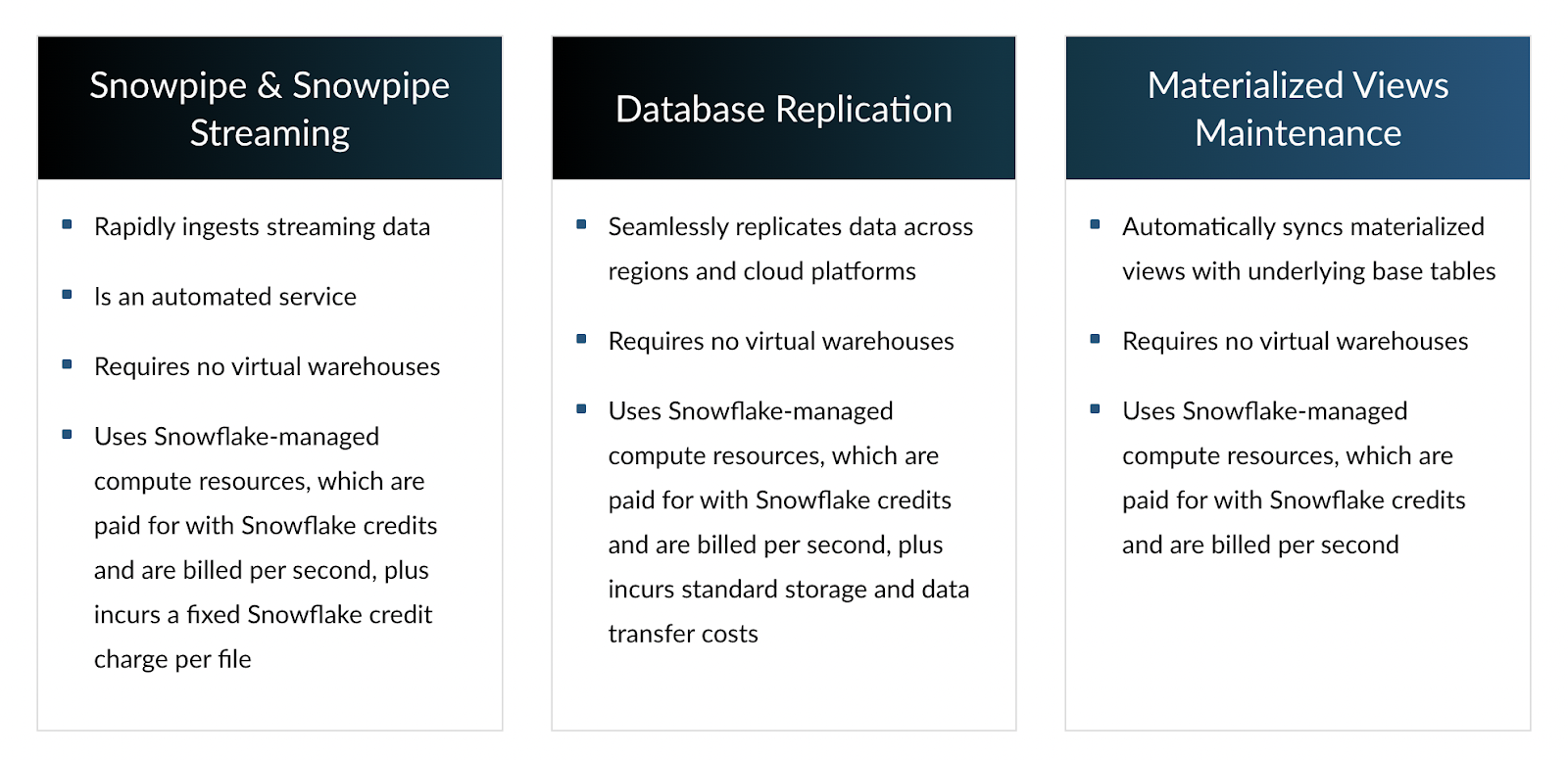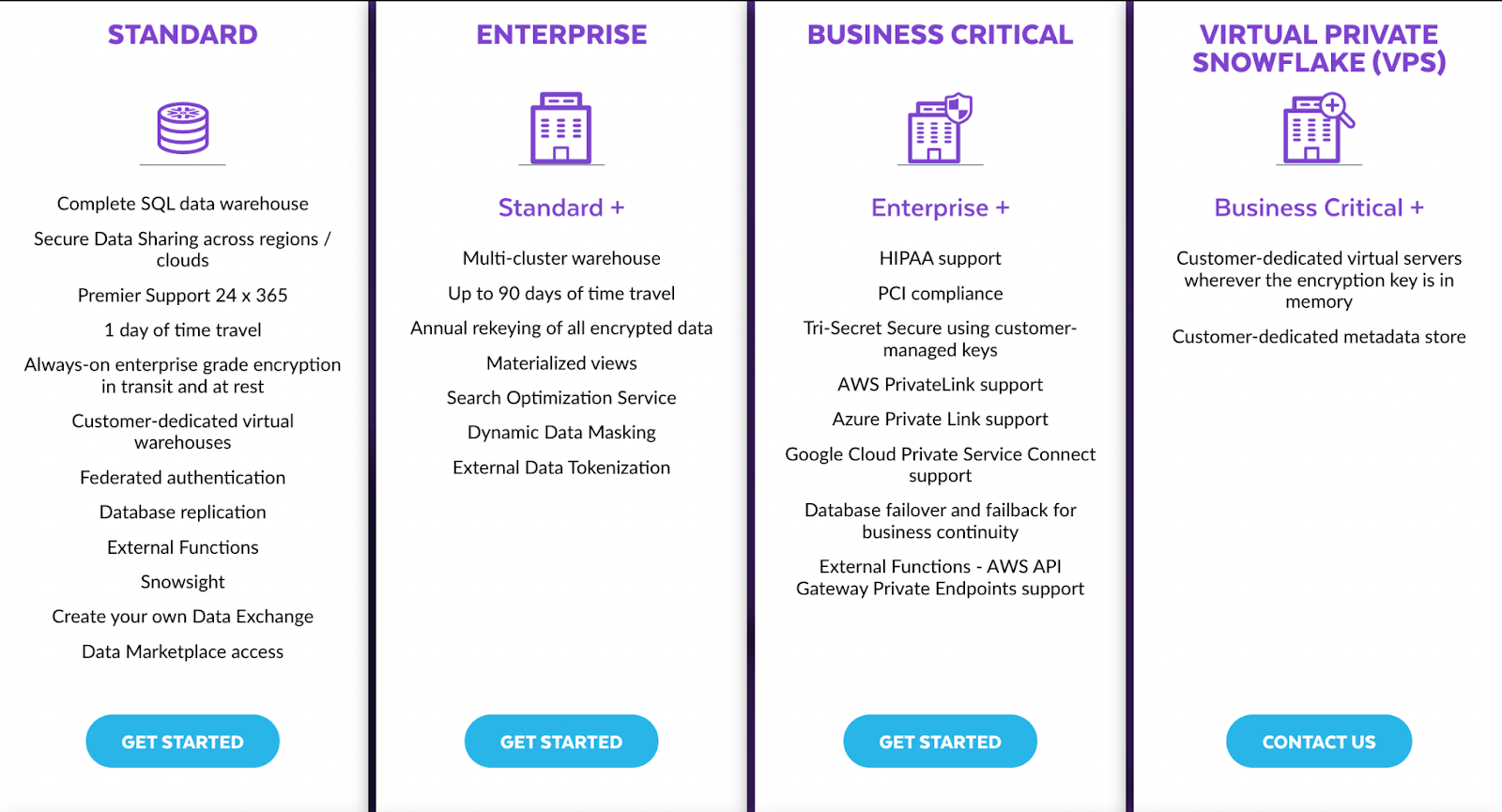
In the ever-evolving landscape of data platforms, Snowflake is known for its unparalleled ease of operation and maintenance. However, understanding Snowflake pricing is not straightforward. In this exploration, we will delve into the key factors influencing costs and pricing options. By the end, you'll have a clearer understanding of how Snowflake calculates pricing and the available options to customize it according to your specific needs.
Snowflake offers a usage-based pricing model that centers around two key components: storage and compute. This unique approach grants users the freedom to independently scale both storage and compute resources according to their specific needs. This means that if you know how to manage and optimize your workload enough, you can allocate the precise amount of storage and computing power required for your data workloads, ensuring optimal performance without any unnecessary overhead.
Snowflake's compute cost model is designed to seamlessly accommodate varying workloads and ensure efficient resource utilization. The flexibility lies in its unique architecture, which separates compute resources from storage, allowing users to independently scale their compute power. This approach eliminates bottlenecks, even when dealing with large and complex datasets.
For virtual warehouse compute costs, they are determined by the number of virtual warehouses employed, their sizes, and the duration of their operation. Virtual warehouses serve as compute clusters that facilitate data loading and query processing. Snowflake provides a range of virtual warehouse sizes, from X-Small to 6XL*-Large, giving customers the freedom to choose the level of processing power required for their specific needs. For instance, when a virtual warehouse remains idle, there will be no consumption of Snowflake credits.
Snowflake's compute cost logic is designed to match query complexities with the size of the virtual warehouse. The larger the virtual warehouse, the faster queries run. Thus, if you use Snowflake properly, whether dealing with straightforward or intricate queries, the pricing model ensures that you only pay for the compute resources you actually utilize.

The storage cost includes different elements like files staged for bulk data loading/unloading (both compressed and uncompressed). It also covers database tables, including historical data used for Time Travel queries to maintain data integrity and consistency. Additionally, storage costs take into account the fail-safe feature, which ensures the protection of database tables and their clones, even if data is deleted from the original table.
Simply put, the cost of storage in Snowflake is based on the average daily usage of terabytes (TB) per month, and your data is automatically compressed.

Snowflake credits play a pivotal role in shaping the platform's pricing structure by acting as a unit of measurement. The consumption of credits can vary based on several key factors, including the intricacy of queries, the volume of data processed, and the degree of concurrency within the system.
Determining a fixed price for Snowflake Credit per cost does not have a straightforward answer. The specific price per credit depends on elements like the region of your Snowflake deployment, the chosen Snowflake edition, and the pricing agreement, whether on-demand or pre-purchased credits. These factors collectively shape the pricing structure, offering a dynamic and personalized approach to meet the unique needs of each user.
While compute and storage form the core of Snowflake's pricing, it is crucial to consider any additional costs that may apply. These could include costs associated with serverless features and Cloud services compute. Being aware of potential additional costs helps in estimating your overall expenses.
The serverless features offered by Snowflake, such as Snowpipe & Snowpipe Streaming, Database Replication, Materialized Views Maintenance, Auto Clustering, and Search Optimization Service, all use Snowflake-managed compute resources and will comused Snowflake credits when they’re used. In addition to the compute cost associated with Serverless features, Snowpipe incurs a fixed Snowflake credit charge per file, while Database Replication involves standard storage and data transfer costs. However, all these features don't require virtual warehouses.


At the core of Snowflake's architecture, Cloud Services handles various essential tasks, including processing user requests, managing logins, displaying query results, and more. This is where many account-level and session operations take place, and Snowflake fully manages the compute resources for these tasks, making the platform's operations streamlined and hassle-free.
Snowflake offers an On-Demand pricing option, which is ideal for businesses with varying workloads. With this model, you pay only for the compute and storage resources used on a per-second basis. It provides flexibility and agility, as resources automatically scale to meet demand, making it well-suited for unpredictable workloads.
For businesses with more predictable and consistent workloads, Snowflake offers Capacity Pricing. This option allows you to reserve and pre-purchase compute resources in advance, offering potential cost savings compared to On-Demand pricing. It is a suitable choice for organizations with well-established data usage patterns.
Snowflake offers a range of powerful features, from secure data sharing across regions and clouds to always-on enterprise-grade encryption and time travel capabilities. With four distinct packages, including three popular On-demand pricing options, Snowflake caters to the diverse needs of enterprises, ensuring a seamless and flexible data solution.

.
Moreover, Bluesky's optimization solution for Snowflake takes data teams to new heights by offering comprehensive optimization for Snowflake workload performance and associated costs, along with actionable recommendations.This not only enhances overall efficiency but also ensures you get the most out of your Snowflake experience. Leading companies such as Notion,Coinbase, Lime, and Nextbite have already embraced Bluesky's optimization solution.
If you want to maximize your Snowflake investment, don't hesitate to get in touch with us.
Understanding Snowflake pricing is fundamental to making informed decisions about data management strategies and cost optimization. By comprehending the various components of pricing, including compute costs, storage fees, and Snowflake credits, businesses can tailor their data warehousing solutions to suit their specific needs and budget. Additionally, exploring pricing options like On-Demand and Capacity Pricing empowers organizations to align their usage with the most cost-effective model. We recognize that tuning Snowflake workloads for optimal efficiency can be time-consuming and challenging for many organizations. That's where we come in to assist you! With Bluesky, you can reduce the time spent on tuning and focus more on building, making the continuous cost optimization easy.